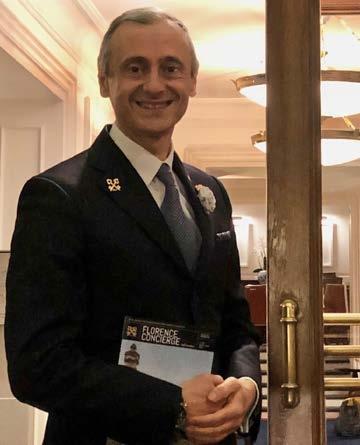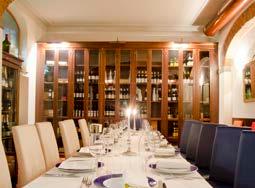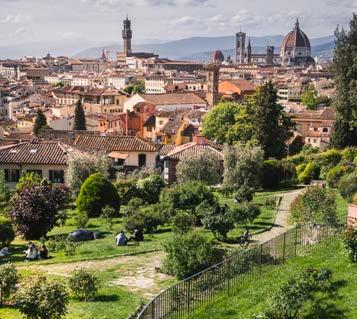
4 minute read
The best exhibitions to see in autumn

In autumn Florence will once again be the capital of contemporary art, with a full calendar of cultural events ready to invade the city. It begins with the Henry Moore in Florence exhibition, a tribute 50 years a er the memorable 1972 exhibition held at Forte di Belvedere, scheduled from 16 September to 31 March 2023. The city pays homage to the English master with a project created thanks to the renewed collaboration with the Henry Moore Foundation and the BIAF – Florence Antiques Fair. The exhibition, curated by Sebastiano Barassi, Head of Collections and Exhibitions at the Henry Moore Foundation and Sergio Risaliti, Director of the Novecento Museum,
GREAT ARTISTS, EMOTIONAL INSTALLATIONS AND ALL THE BEST OF ART TO SEE THESE DAYS IN FLORENCE
presents two monumental works, Family Group and Large Interior Form, displayed respectively in two of the city’s emblematic sites - Piazza della Signoria and the churchyard of the Abbey of San Miniato al Monte, in dialogue with the historic-artistic heritage of Florence. In conjunction with the exhibition of these two sculptures, Back to Moore. Forte Belvedere 1972 will be held in the Sala d’Arme of Palazzo Vecchio, from 19 to 23 September, an exhibition of historical images collected from the personal archives of all those who, from all over Italy, visited the exhibition. From 22 September we move




1. Tony Cragg. I’m a Sculpture Fan! at Museo Novecento 2. I Sospesi - Basilica di San Lorenzo ph. Massimo Sestini 3. 4. Olafur Eliasson: Nel tuo tempo - Palazzo Strozzi 5. Henry Moore in Florence 2
5 3


Henry Moore’s work in Piazza della Signoria until 31 March 2023 for the exhibition aaa Henry Moore in Florence



to Palazzo Strozzi, which will be hosting In your time, a major exhibition that until 22 January 2023 involves all the Renaissance spaces of the palazzo through the works of Olafur Eliasson, one of the most original and visionary contemporary artists. Curated by Arturo Galansino, General Director of the Palazzo Strozzi Foundation, the exhibition features installations and historic works that combine elements such as coloured filters, water, mirrors and light to create an interaction with the Renaissance architecture. Eliasson thus presents a plurality of possible narratives with the aim of raising new awareness of the spaces by the public. From 23 September to 29 January 2023, we go back to the Museo Novecento, with Tony Cragg protagonist of a major solo exhibition Tony Cragg. I’m a Sculpture Fan! which presents a selection of sculptures and works on paper. The English master, one
A FULL CALENDAR OF CULTURAL EVENTS IN THE CITY
of the most famous exponents of contemporary sculpture, is best known for having contributed to a renewal of the plastic language thanks to the introduction of new materials and new techniques, among the most experimental and innovative of our time. For the first time, three monumental sculptures will be exhibited in the cloister of the Museo Novecento. The completely new project is conceived as a mediation tool aimed at presenting not only the works (sculptures and drawings) but also the artist’s creative process. Finally, from 20 October to 26 March 2023, Florence will host Escher, the record-breaking exhibition with more than 200 works by the visionary artist in the spaces of the historic Museo degli Innocenti. The anthology recounts the genius of the Dutch artist who visited Italy for the first time in 1922, exploring it from north to south and depicting it in many of his works. An absolute must to see is Mr. Arbitrium, the monumental sculpture by Emanuele Giannelli, which has arrived in Florence and will stay here until 31 October. It is located on the outer le -hand side of the Basilica of San Lorenzo while the group of sculptures I Sospesi have been placed inside the cloister of the Laurentian building. You can see very clearly Mr. Arbitrium’s muscles contract as he tries to hold up the building or rather push it away in such a decisive way, it is the sculpture which represents this ambivalent technique which Giannelli uses in his works: the double meaning that determines the work as pushing something away or supporting it. Clinging to history to protect it or enhance it, or perhaps moving it away in order to get rid of such a cumbersome weight? Even if we will never know, we are aware that our choice will be arbitrary, like his name.










